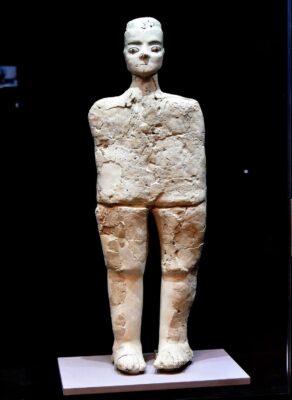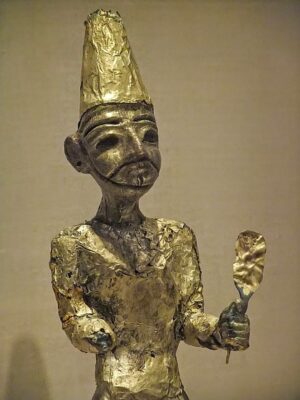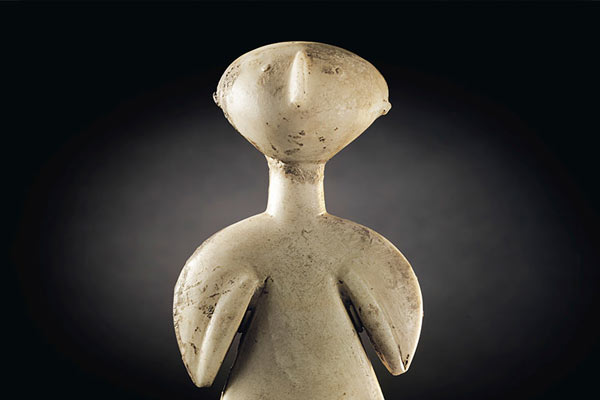Art of Ancient Levant
Art from the Holy Land
Let it be told to Aliyan Baal:
‘The mountains will bring Thee much silver.
The hills, the choicest of gold;
The mines will bring Thee precious stones,
And build a house of silver and gold.
A house of lapis gems!’
Fragment from the “Baal Cycle”, Ugarit text, 2nd millennium b.C.
Images: Human statue from Ain Ghazal city, 8th millennium BCE. Jordan Museum, Amman. Photo by Osama Shukir Muhammed Amin ·· Figurine of the Canaanite God El from Megiddo, 1400-1200 BCE. Photo by Mary Harrsch
In the history of art and archaeology, ‘Ancient Levant’ or ‘Eastern Mediterranean’ corresponds to the area bounded by the Mediterranean in the west, Anatolia (more specifically the Taurus Mountains) in the north, Mesopotamia in the east, and the Arabian Desert and Sinai in the south, which today would correspond to Israel, Lebanon, Palestine, Jordan and part of Syria. As can be easily surmised, it is a region of enormous cultural richness and complexity, which gave rise to a great variety of works of art.
Among the most important sites in the area are: in the south, ʿAin Ghazal, in the present-day metropolitan area of Amman (Jordan), is one of the oldest urban sites in the world, with evidence that it existed as early as 10,000 BC. The Ain Ghazal Statues are among the oldest anthropomorphic sculptures in the world. In the north, the site of Ebla (Tell Mardikh) in northern modern-day Syria, whose group of 20,000 cuneiform tablets, written around 2,350 BC, is often considered to be the earliest library in history. West of Ebla, the city and port of Ugarit was crucial for the relations with other civilizations, such as Egypt and Cyprus.
To the east, on the borders of the area we have defined, lies the ancient city of Palmyra, testimony of the Roman conquest of the area and, more recently, of the destruction wrought by ISIS during the Syrian War.
G. Fernández · theartwolf.com
Follow us on:




